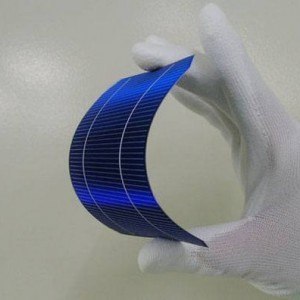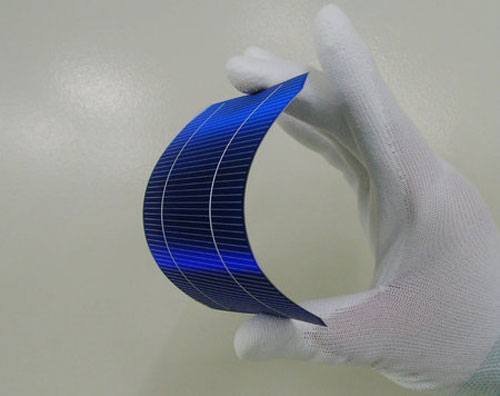The promise of thin film solar cells in solar panel production is undeniable, as it is capable of providing flexible and dependable power. However, the main stumbling block has always been construction, as one of the main ingredients is cadmium chloride, an expensive and toxic material. Now, dependence on this material may come to an end as researchers at the University of Liverpool discovered how to create thin film solar cells with magnesium chloride, which is used for making tofu.
More Efficient, Less Toxic Thin Film Solar Cells
The problems associated with cadmium chloride are well known. The primary benefit of applying cadmium chloride coating on a solar cell is it increases the thin film solar cells energy efficiency. However, the drawback is the process itself, as it is potentially toxic, expensive and possibly carcinogenic. Because of technological advances, the level of cadmium chloride in a finished solar cell is not toxic, but the process required to reach that level is expensive and difficult.
But the researchers at the University of Liverpool led by physicist Jon Major found a way to go around this situation. Together with his colleagues they started conducting experiments to find a suitable replacement. Through research the researchers learned that magnesium chloride, which is also an ingredient in bath salts, is as efficient as cadmium chloride.
Benefits of Magnesium Chloride in Thin Film Solar Panels
Multiple tests indicate that magnesium chloride is not only as effective but it is 300 times cheaper. Furthermore, magnesium chloride is eco-friendly and doesn’t require safety gear. Just as important is the fact that it can be applied easily, whereas cadmium chloride requires elaborate equipment. That’s not the case with magnesium chloride, as they can be applied with a simple spray gun which can be purchase in any model shop. So not only is it environment friendly, but it is also less of a hassle to use.
If magnesium chloride flies and replaces cadmium chloride, thin film solar cells in solar panel production will become more affordable. As pointed out earlier, a great deal of the money spent to manufacture thin film solar cells goes into safety equipment and preventing health hazards. In addition, special methods have to be used to dispose of cadmium chloride once their lifespan expires.
All of these add to the cost of manufacturing thin film solar cells, but that problem could be resolved if magnesium chloride is applied in its stead. Whereas a single gram of cadmium chloride costs $0.3, magnesium only sets manufacturers back by $0.001. According to Major, by replacing cadmium chloride with something natural like magnesium chloride, the industry will be in position to save a lot of money which will translate to cheaper solar energy, which will lead to widespread use.
It should be stressed that using magnesium chloride alone won’t bring the cost of solar panels down immediately. However, the benefits that magnesium chloride can bring is enormous not just in terms of cost reduction but of safety as well. For many years, tofu has been known as a delicious and health treat. Now it seems they could be used to make thin film solar cell technology more affordable too.

